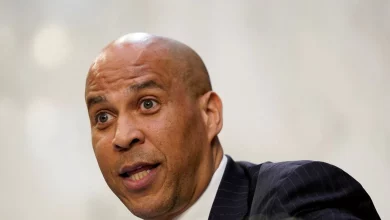Treasury Yield Curve Steepens on Bet Fed Sticks to Hawkish Path

(Bloomberg) — The bond market has wasted little time pushing Treasury yields sharply higher in the early days of 2022, underscoring concern that elevated inflation will spur more aggressive monetary-policy tightening from the Federal Reserve.
Most Read from Bloomberg
The jump has been led by the 10- and 30-year benchmarks, steepening the yield curve in a sign traders expect economic growth and high inflation won’t be derailed by the record surge in the omicron variant of the coronavirus. That outlook may be underscored by the release Wednesday of the Federal Open Market Committee’s minutes of its December meeting, when it decided to move more quickly to wind down the bond-buying spree ushered in after the onset of the pandemic.
“Omicron may slow economic activity in January, but we are seeing evidence that the variant is milder and that raises the prospect of clearer sailing for the global economy this year,” said David Kelly, chief global strategist at JPMorgan Asset Management Inc. in New York. In that scenario, the present low level of Treasury yields means “it doesn’t take much to push them higher.”
The yield on the U.S. 10-year note held at 1.65% on Wednesday, after climbing to 1.68% a day earlier. The surge from its Dec. 31 close of 1.51% is pushing it toward 2021’s closing high of 1.74% set in March. The 30-year bond yield has risen to 2.06%, just shy of its October closing high of 2.16%.
“Even if economic growth is slowed by the Omicron variant, the Fed’s concerns about inflation should be enough to keep tightening on track,” Deborah Cunningham, chief investment officer of global liquidity markets at Federated Hermes, wrote in a client note Tuesday. “Yield curves have already responded by steepening, and we expect that to continue.”
Although the recent trend of rising long-term inflation expectations abated Tuesday after a factory gauge for December showed a decline in prices paid by manufacturers, the widely followed relationship between two- and 10-year Treasury yields remains appreciably steeper at around 0.9 percentage points, up from late December’s low of a little over 0.7 percentage points. For much of last year, the yield curve flattened after a surge in 10-year yields peaked at the end of March, with the bond market pricing in a shallow path of rate tightening.
Corporate Issuance
Investor sentiment has also been damped by a rush among companies to sell new debt before yields rise further.
“While the Fed’s hawkish pivot at its December meeting provides a fundamental reason for higher Treasury yields, we believe increased corporate supply and rate lock hedging amid limited liquidity is driving this early-year surge,” said Prashant Newnaha, an Asia-Pacific rates strategist at TD Securities in Singapore.
At present, the bond market anticipates three quarter-point Fed rate increases during 2022, endorsing the trajectory forecast by policy makers last month. But debate is brewing over whether the first move will come in May or as soon as March.
The release of the FOMC minutes is just one signpost for bond investors. It will be followed by the monthly payrolls report on Friday and consumer-price inflation data next week, both of which may help clarify when the tightening cycle will commence.
“Labor-market tightness and labor cost pressures will be a major theme in the run-up to the first Fed tightening,” said Lou Crandall, chief economist at Wrightson ICAP LLC. Unless omicron derails the economy, Crandall thinks Fed officials may decide at their late January meeting that “asset purchases will fall to zero after the February purchase cycle,” setting the stage for a first rate hike in March.
Given the Fed’s recent focus on taming inflation, the risk for the bond market is that long-dated yields are set to push past last year’s peaks until the scope of the economic rebound, inflationary pressure and the bank’s policy response are clarified.
Higher Rates
“You only reduce inflationary pressure by slowing aggregate demand and that requires higher long-term rates,” JPMorgan’s Kelly said. “There will be no impact on curbing inflation if long-term rates are not pushed up. The Fed is quite capable of pushing up long-term rates if it decides to reduce the size of its balance sheet along with higher overnight rates.”
For now, the Fed has spelled out a clear path of concluding its monthly bond buying in March and then assessing matters before it starts to raise overnight rates. December’s FOMC minutes will give investors an opportunity to assess how worried the central bank is about inflation and rising employment costs, as well as why those forces pushed it to embark on a faster pace of tapering and to upgrade its estimated tightening path to six rate hikes by the end of 2023.
The risk facing the bond market is that the slow and steady path of tightening that defined the past cycle may not ensue this time. That point was made by Fed Chair Jerome Powell last month, when he highlighted how the economic climate is far more constructive that it had been just as inflation holds well above the central bank’s target of 2%.
“One of the major takeaways is that the timing between the end of tapering, lifting off from the zero lower bound, and the beginning of a potential passive rundown of the balance sheet does not have to mirror their playbook from the last cycle,” analysts at Deutsche Bank wrote in a note to clients.
(Updates yield levels)
Most Read from Bloomberg Businessweek
©2022 Bloomberg L.P.
Source link





